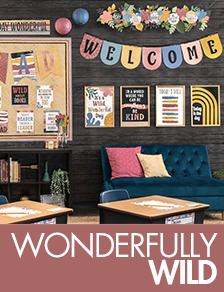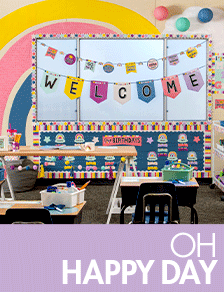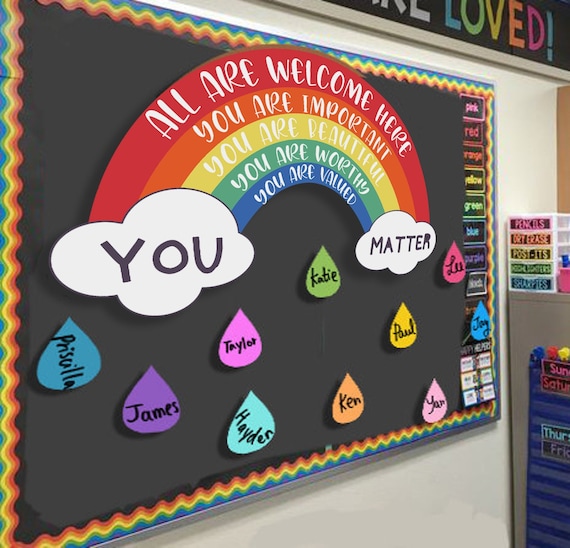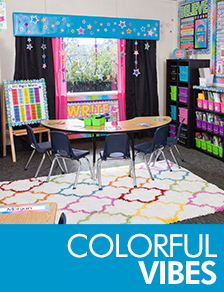As an educator, you know that the classroom environment plays a significant role in your students’ learning experiences. A thoughtfully decorated classroom can inspire creativity, comfort, and motivation. Over the years, I’ve experimented with various decor styles, and I’m excited to share insights that can help you create a classroom that feels welcoming and productive.
Why Classroom Decor Matters
Classroom decor is more than just aesthetics; it contributes significantly to the classroom’s atmosphere and students’ emotional well-being. Here are some key reasons why you should invest time in decorating your classroom:
- Creates a Positive Learning Environment: A vibrant and organized classroom can enhance students’ mood and engagement.
- Encourages Creativity: Fun and visually appealing decorations can stimulate students’ imaginations and creativity.
- Displays Learning Materials: Using decor to showcase students’ work or important educational concepts reinforces learning.
Types of Classroom Decor
Classroom decor comes in various forms. Depending on your teaching style, preferences, and the subject matter, you can choose from the following types:
1. Inspirational Quotes
Incorporating motivational quotes can create a positive atmosphere. Hang them on the walls or create a dedicated bulletin board.
2. Subject-Specific Decor
Use decor that reflects the subject you teach. For example, a science class might benefit from posters of the periodic table or space themes.

3. Student-Created Artwork
Displaying student projects or artworks can foster a sense of ownership and pride in the classroom.
4. Themed Decor
Consider a seasonal or annual theme, such as a jungle, under the sea, or space, to create a cohesive look.

5. Functional Decor
Include elements that are practical, such as calendar boards, to-do lists, or classroom rules that are visually appealing.
Creating a Cohesive Design
A cohesive design can make your classroom feel connected and organized. Here are some tips:
Color Scheme
Choosing a harmonious color palette can unify your décor. Consider using colors that promote calmness and focus, such as blues and greens, or lively shades like yellows and oranges.

Consistent Theme
Decide on a theme that resonates with your teaching philosophy. This could be nature, technology, or literature. Ensure that all decor elements align with this theme.
Essential Classroom Decor Items
Here’s a comprehensive list of essential classroom decor items that can enhance your teaching environment:
- Bulletin Boards
- Posters and Charts
- Classroom Rugs
- Bookshelves and Book Displays
- Interactive Whiteboard Accessories
- Desk and Table Accessories

DIY Decor Ideas
Creating decor items can be a fun and rewarding experience. Here are some DIY ideas:
Bulletin Board Makeover
Transform a plain bulletin board with fabric, scrapbook paper, or washi tape. Incorporate your school colors for a personal touch.

Framed Student Artwork
Frame student artwork using inexpensive frames and create a gallery wall. It’s a great way to celebrate students’ creativity.
Colorful Classroom Labels
Create labels for classroom supplies using colorful cardstock. This helps in organizing and also adds to the decor.

Seasonal Decor Changes
Change decor with the seasons. Create simple crafts during art classes to decorate the classroom for holidays.
Decorating on a Budget
Decorating doesn’t have to break the bank. Here are some budget-friendly tips:

Thrift Stores and Clearance Sales
Check out local thrift stores for unique finds. Many items can be repurposed or refurbished for use in your classroom.
Printable Resources
Search online for free printable resources, including posters, calendar templates, and bulletin board decorations.
Collaborate with Colleagues
Share resources with fellow teachers. Organizing a swap for decor items can help everyone save money while enhancing their classrooms.
Pros and Cons of Classroom Decor
Pros
- Enhances student engagement and motivation.
- Creates a sense of community and belonging.
- Improves the overall aesthetic of the learning environment.
Cons
- Time-consuming to set up and maintain.
- May require financial investment.
- Over-decoration can distract students from learning.
Comparison Table: Classroom Decor Ideas
| Decor Type | Cost | Impact on Students | Maintenance |
|---|---|---|---|
| Inspirational Quotes | Low | High | Low |
| Subject-Specific Decor | Medium | Medium | Medium |
| Student-Created Artwork | Low | High | Low |
| Themed Decor | Variable | Medium | High |
| Functional Decor | Medium | High | Medium |
Frequently Asked Questions (FAQs)
1. How often should I change my classroom decor?
While you don’t need to change your decor frequently, refreshing it at the beginning of each term or season can keep the environment exciting and engaging for students.
2. What are some inexpensive decor options?
Some cost-effective options include printable posters, DIY crafts, and items from thrift stores. You can also repurpose materials you already have.
3. How can I involve students in the decorating process?
Involve students by having them create artwork or decorations that reflect their personalities or interests. It fosters a sense of ownership and pride in their classroom.
4. Is there such a thing as too much classroom decor?
Yes, an overcrowded classroom can distract students. It’s essential to find a balance between inspiring decor and a clean, organized space that supports learning.
Conclusion
Investing time and creativity into your classroom decor can transform the learning environment for your students. From meaningful displays to inspiring quotes, every element contributes to making your classroom a welcoming place. Remember, the goal is to create a space where students feel valued, inspired, and ready to learn. So, roll up your sleeves, grab some supplies, and start decorating!